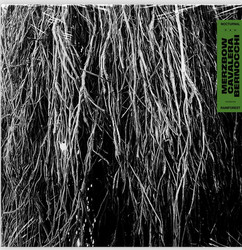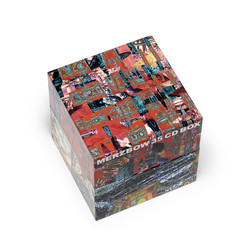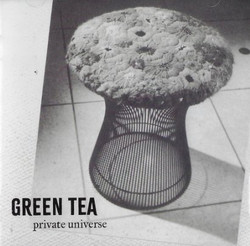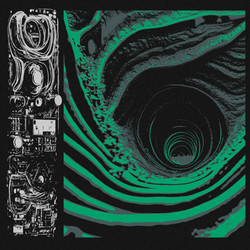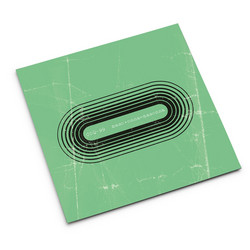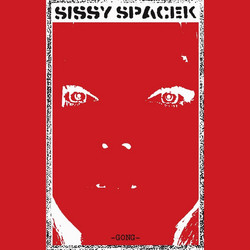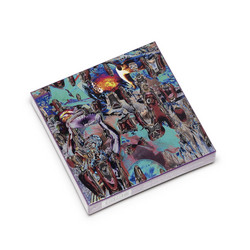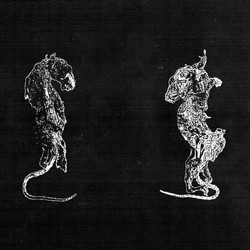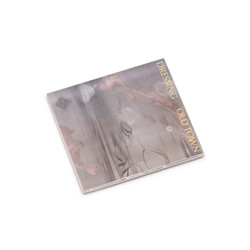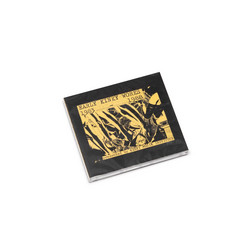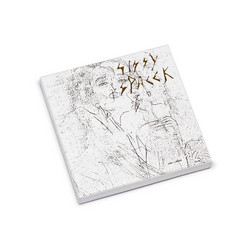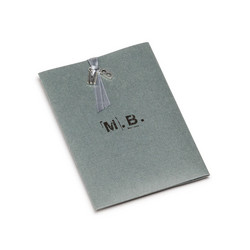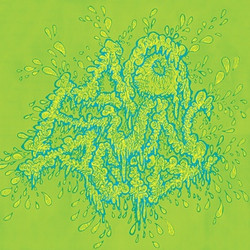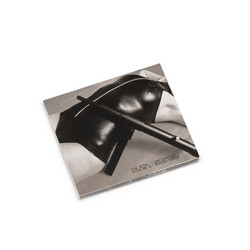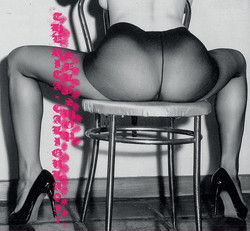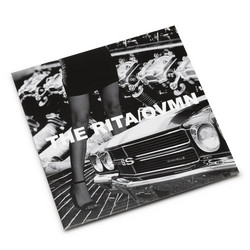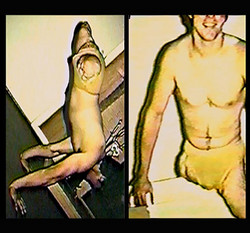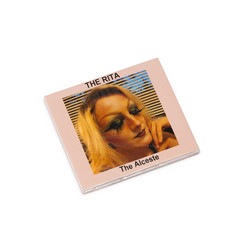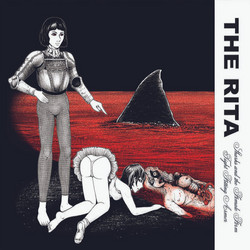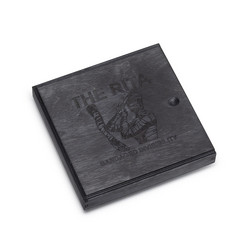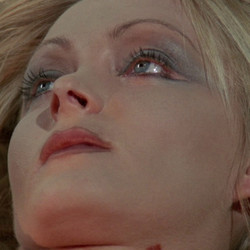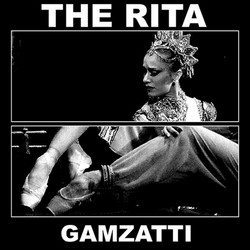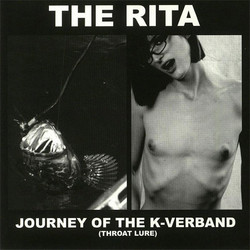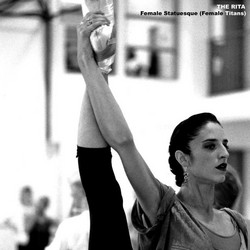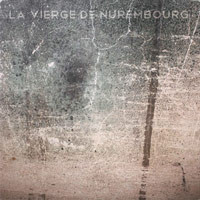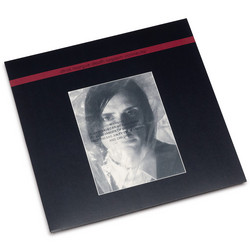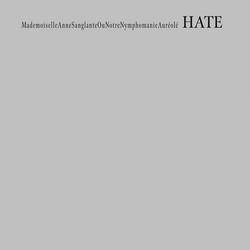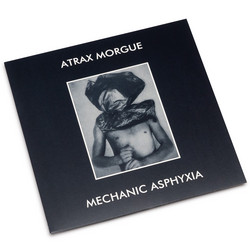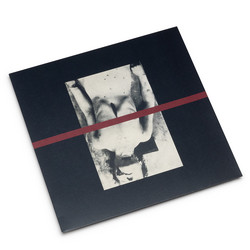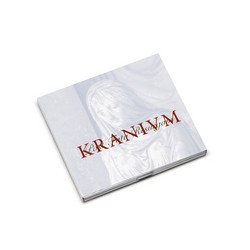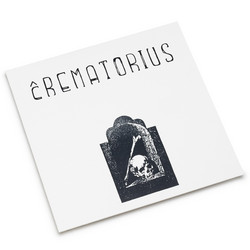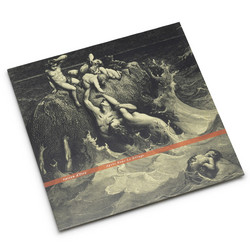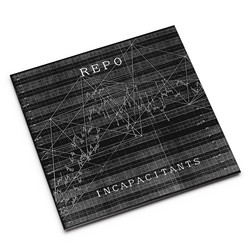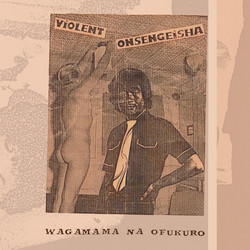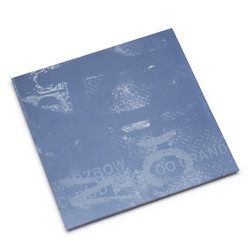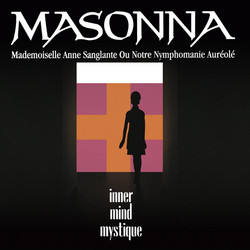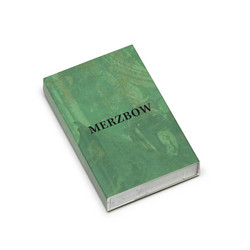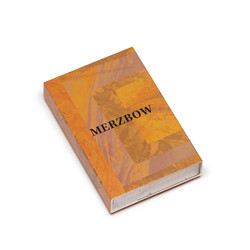Pygmalion carved a beautiful woman from ivory and when he kissed his statue’s cool white lips he found that Aphrodite had turned them pink and warm with life. From ephemera, from tulle and satin, The Rita has assembled a fantasy woman; a ballerina, a fairy, a sex worker – violently she is animated into existence as a sonic monolith dense and menacing as Richard Serra’s looming steel. With the double LP set The Lilac Fairy, The Rita reaches an apex of fixation on the dancer’s body. This obsession has grown simultaneously more focused and greater in scale; here the sonic object is not a dancer nor any of her parts, neither thigh nor ankle; The Lilac Fairy records the ritualized construction of a garment, The Lilac Fairy is a costume, a tutu empty of body altogether.
Tutu meaning “ass” in some archaic French lexicon, tutu encircling the hips and extending up into a bodice from which the woman rises like a blossom, tutu projecting from the body as a frothy, diaphanous frame for the genitals, tutu echoing the frilly labial folds. The sanctity of ballet as elite aristocratic high art has always been a thinly-veiled facade for blatant eroticism, where women are interchangeable pieces of scenery arranged in colonnades for the pleasure of the male gaze. The Lilac Fairy herself was originally choreographed by Imperial Master Marius Petipa for his unskilled but beautiful daughter Marie as a mime part, but has been modified over the past century to become one of the most taxing characters in the female dancer’s repertoire, with a punishingly slow variation of repetitive steps that must all be executed without betraying any signs of effort or fatigue; in every iteration the dancer wears a wide and vacant smile. In the words of Prima Ballerina Assoluta Margot Fonteyn: “If audiences knew what pain the dancers were enduring, only people who like bullfights could bear to watch it.”
The Lilac Fairy is a ricochet between fabrication and obliteration, degradation and ritualized exaltation. As the fantasy woman is assembled through the Total Fetish Object of the tutu, so she is reduced from personhood to the garment that encases and adorns her. The tutu is her Reliquary, to build it is both an act of worship and a proclamation of ownership. Only within the noise does she ascend, within the inimitable walls of The Rita that choke every frequency, devour all and drown all, shatter every object. Everything is reduced to geometry, a cello attempts to accompany and is pulverized. Within the abstraction of harsh noise, The Rita simultaneously brings to life and annihilates the Total Fetish Object, and in this performance of gestures she is elevated to the realm of non-objectivity, the Black Square of Malevich, Vessel and Void -- pure.
Listeners would be wise to note that Sam McKinlay has transcended the trope of the romanticized cult of genius surrounding solitary harsh noise, and The Rita is now half-woman, with the integral presence of Arlie Doyle as both the embodiment of the objectified form/performative feminine and collaborator in the sonic deconstruction of her own body. Additionally, The Lilac Fairy utilizes the contributions of several skilled craftspeople and musicians, with the tutu constructed by Katherine Hotmer and fittings to Doyle’s body performed by Rachel Hayward, Luke Tandy’s assiduous recording of the process of construction, and cello accompaniment by Leila Bordeuil. The sound that has made McKinlay a modern master of harsh noise remains intact, but the expansive critical and collaborative scope of The Lilac Fairy makes it a hallmark in the oeuvre of The Rita. (Kristin Hayter)
The records have been pressed on 140 gr black vinyl with black label and black inner sleeve and comes in a deluxe silver silkscreen on black cardboard sleeve with artwork collage by Sam McKinlay, limited to 199 hand numbered copies with six insert in black cardboard and silver ink and color poster.

